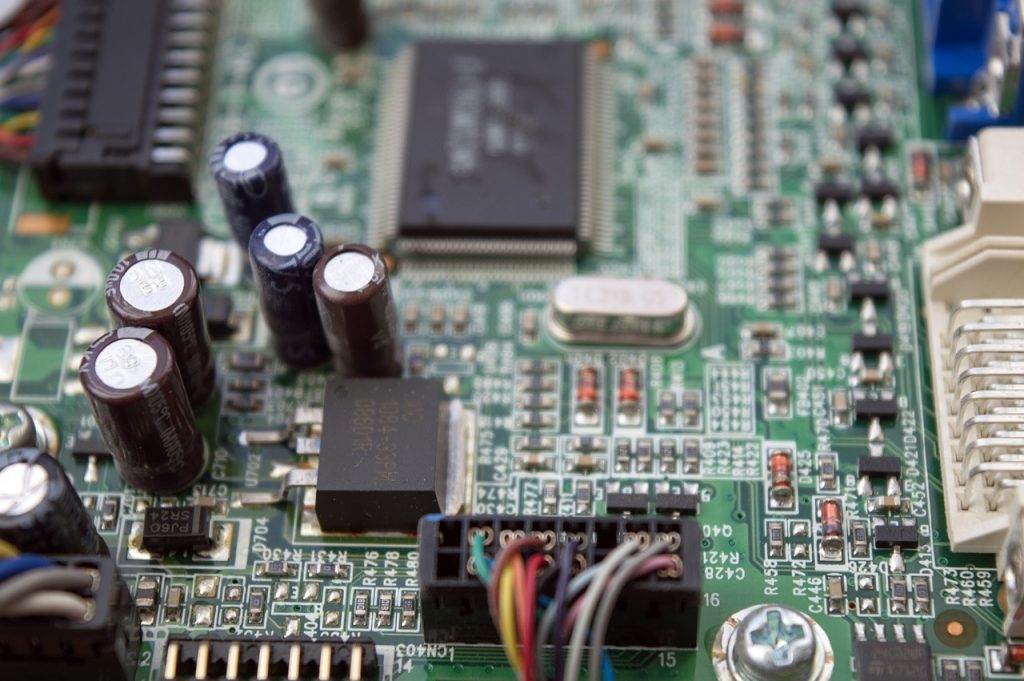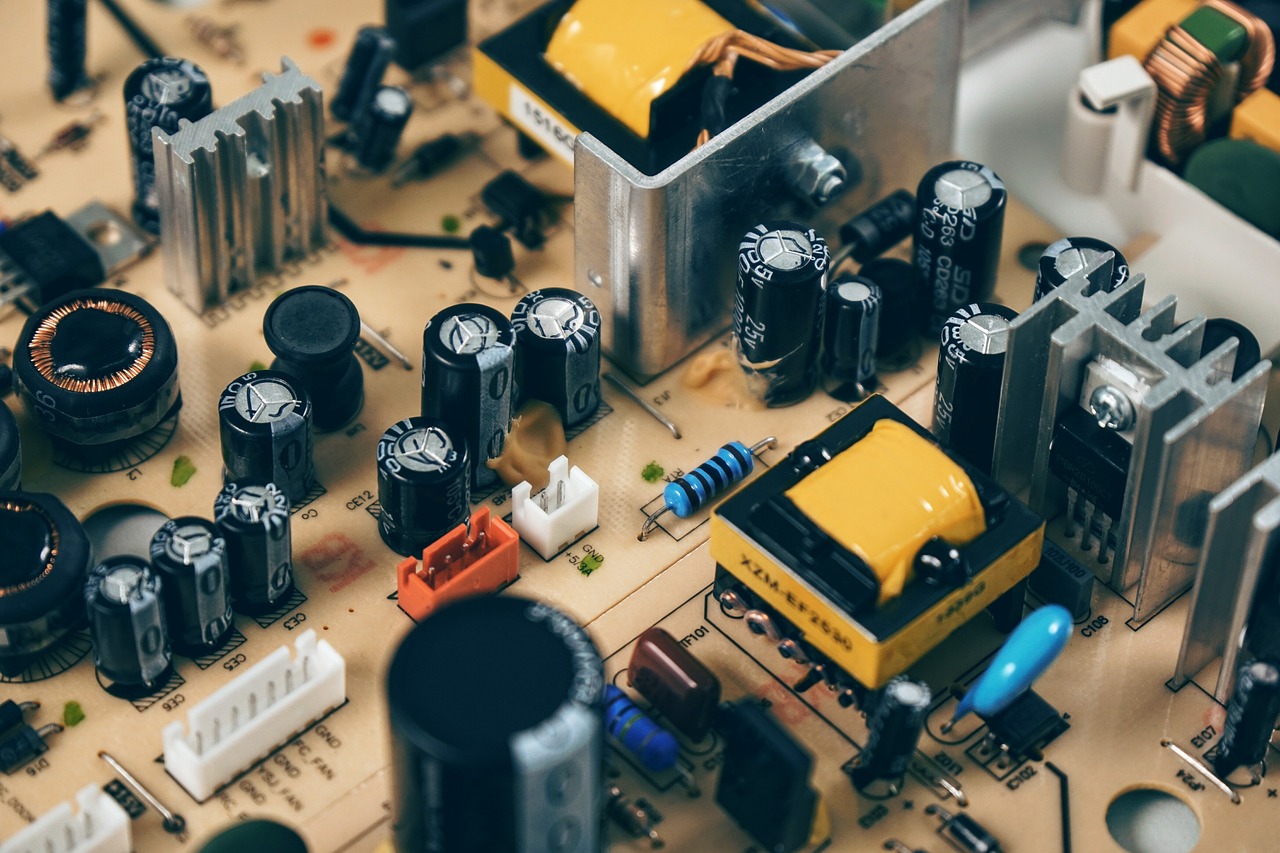With the rapid growth of electronic devices, the demand for reliable circuit protection components like chip resistors has surged. Engineered for optimal performance in harsh environments, chip resistors are essential across industries, from consumer electronics to automotive and industrial sectors. This article explores their fundamentals, classifications, and how they work—equipping you with the knowledge to make informed design decisions.
Decoding Chip Resistors: What They Are and Their Working Principles
Chip resistors regulate current flow in circuits and come in a compact, passive electronic component form. They are small, flat and rectangular-shaped circuit protection components that resemble a small ‘chip’. Manufacturers typically produce these integrated circuit devices by mixing metal and vitreous enamel powders, then applying the mixture to substrates using screen-printing. Metallised ends on each side allow for easy placement and connection on circuit boards.
Chip resistors play a vital role in operating, protecting, and controlling circuits and as passive components, they can reduce voltage or current signals. However, chip resistors cannot increase these facets. If electronic devices did not have any resistors, there would almost be no component to limit the current flow and this could ultimately damage the device. Chip resistors can combat this by opposing the flow of current (DC and AC) based on the fundamentals of resistivity and Ohm’s law.
These circuit protection components achieve their resistance value by combining metal alloys with varying conductivity, from low to high, to create the desired resistance.
Unveiling Different Types of Chip Resistors: Exploring Diverse Classifications

Chip resistors can be classified according to their construction type, circuit function and termination lead. Let’s walk through some of the common classifications of these circuit protection components:
Construction Type
- Fixed resistors: These compact, rectangular components provide a set, predetermined resistance value for consistent circuit performance.
- Variable resistors: These allow you to adjust the resistance level to meet specific requirements, offering greater flexibility in circuit tuning.
- Non-linear resistors: These resistive components exhibit non-linear behaviour when it comes to temperature and voltage.
Circuit Function for Applications
- Voltage dividers: These simple and passive linear circuits can turn a larger voltage into a smaller one.
- Current limiting: This is a protective resistor that prevents appliances from exceeding the current limit.
-
Shunt measure: These resistors are used to measure current flow by producing a voltage drop proportional to the current.
-
Heaters: Designed for heating applications, these resistors convert electrical energy into heat.
-
Strain gauge: Commonly used in sensors and transducers, these resistors detect mechanical strain and deformation in materials.
Termination Lead Types
- Through-hole: These resistors have two wire terminals that can be inserted and soldered to a printed circuit board (PCB) and are designed to oppose the flow of current.
- Surface mount devices (SMD): Surface mount resistors are small rectangular devices that use surface technology to offer a number of benefits in terms of space-saving. They are surface-mounted and are usually smaller in comparison to conventional resistors.
- Chassis: These resistors are generally large and used to adjust certain parameters such as signal levels, bias active elements, and other facets.
- MELF: Often considered one of the most highly stable and reliable resistors, they perform extremely well in comparison to SMDs and can easily meet any demanding requirement of the automotive industry.
Now that you have a good idea about the different classifications of chip resistors, let’s explore some of the most widely used technologies in chip resistors:
Thin film technology
Constructed by depositing a thin metallic layer of coating onto a ceramic substrate, thin film resistors have a high resistance per given area and offer enhanced precision and stability over a range of temperatures.
Thick film resistors
These are manufactured by stencilling a resistive metallic paste onto the base. While thick film resistors are noisier, they are cost-effective and can be used for general-purpose applications.
Foil resistors
With a metal foil applied to a ceramic substrate and photo-etched with a resistive design, foil resistors come with several benefits making them a popular option. These advantages range from non-inductance and enhanced stability to reduced capacitance and noise.
Finding the Right Type of Chip Resistor: Factors to Consider Before You Make Your Purchase
With a multitude of applications in electronic circuits, it is essential to gauge the necessary operating parameters for your specific design when selecting chip resistors. Here is an easy guide to make your life easier:
- Determine the required resistance: The chip resistor you choose must meet the required resistance value for your application.
- Gauge size constraints: When selecting chip resistors, the board space must also be taken into consideration; smaller resistors are typically required for high-density layouts, whereas larger resistors will be needed if you need to handle high power dissipation.
- Identify the adequate power rating: Insufficient power rating can result in failure or damage; therefore, it is crucial to pick a chip resistor with the appropriate wattage.
- Check the voltage rating: Ensure that the voltage value is higher than the maximum voltage, including transients. This is generally considered safer. Moreover, it is better to connect a series of resistors rather than using a single resistor at a higher voltage rating.
- Verify the temperature coefficient: Make sure to check the operating temperature range before you make your purchase. A lower temperature can enhance stability, which is important for precision and reliability, especially over a wide temperature range.
Lastly, we highly recommend that you refer to the manufacturer’s datasheet for any specifications or features. This will help you make the right decision when choosing the right type of chip resistor for you.
Shining a Spotlight on YAGEO’s Chip Resistors: Showcasing the Key Characteristics of These Integral Circuit Protection Components
As an industry leader in providing passive electronic devices, YAGEO’s products come with state-of-the-art technology and are of excellent quality. Here are some of their specifications and characteristics:
- Compact and lightweight
- Automated pick and place assembly
- High reliability and mechanical strength
- Enhanced precision with low inductance
- High power density with low capacitance
- Stable electrical performance
- Wide range of resistance values
- Withstands certain extreme environmental conditions
- Compliant with RoHS regulations
Find High-Quality YAGEO Chip Resistors from the Market Leaders: Get in Touch with Acton Technology
Acton Technology, as a leading distributor of electronic components and semiconductors, empowers businesses to achieve operational excellence. When outsourcing products, we turn to highly reputed manufacturers like YAGEO to ensure our customers get quality products. Whether you are in search of YAGEO’s MLCCs, chip resistors, or any other hard-to-find circuit protection component, you don’t have to look further than Acton Technology! Our innovative solutions will ensure your operations reach their full potential. For more information, reach out to our dedicated professionals now!





